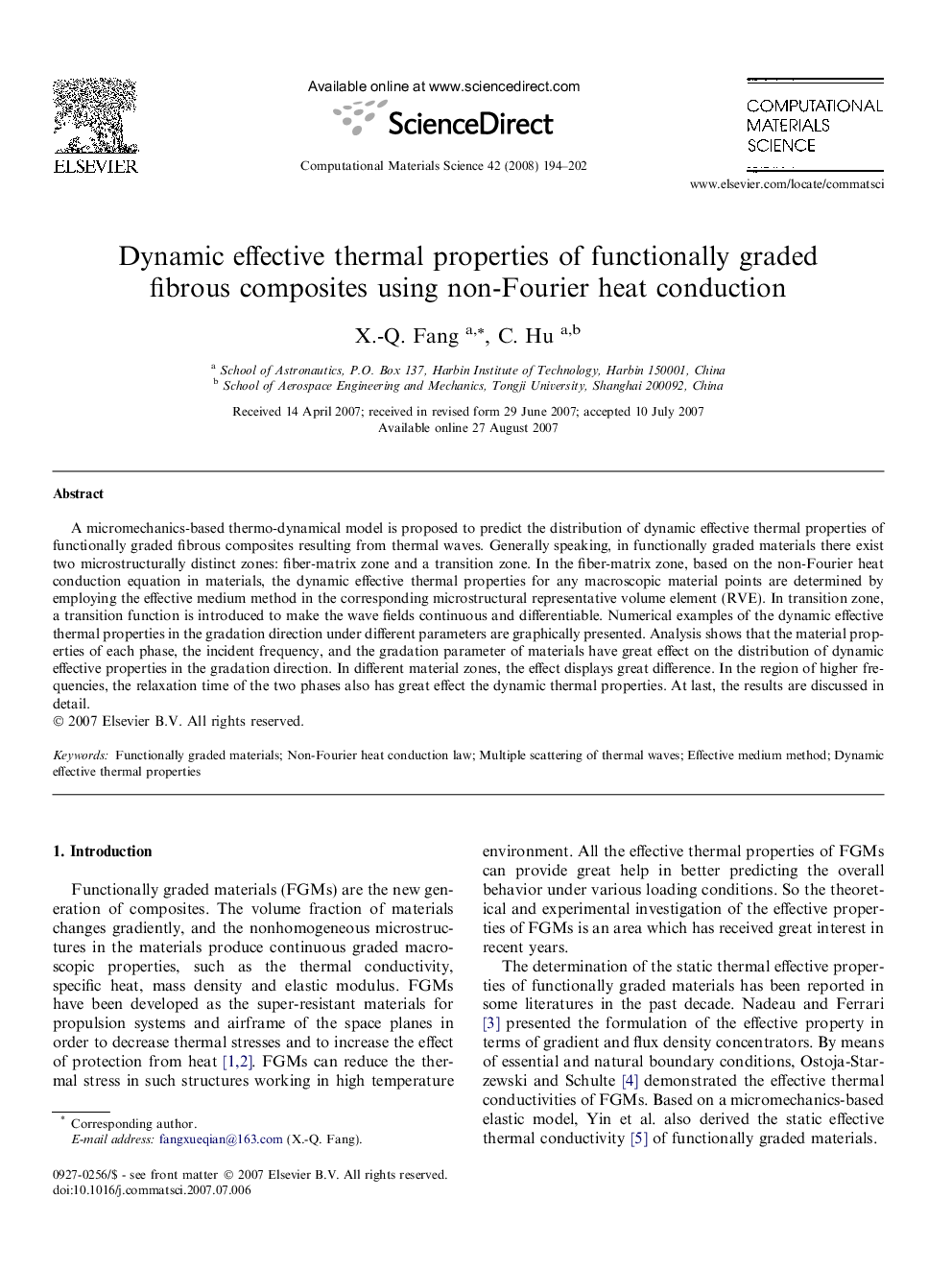| Article ID | Journal | Published Year | Pages | File Type |
|---|---|---|---|---|
| 1564115 | Computational Materials Science | 2008 | 9 Pages |
A micromechanics-based thermo-dynamical model is proposed to predict the distribution of dynamic effective thermal properties of functionally graded fibrous composites resulting from thermal waves. Generally speaking, in functionally graded materials there exist two microstructurally distinct zones: fiber-matrix zone and a transition zone. In the fiber-matrix zone, based on the non-Fourier heat conduction equation in materials, the dynamic effective thermal properties for any macroscopic material points are determined by employing the effective medium method in the corresponding microstructural representative volume element (RVE). In transition zone, a transition function is introduced to make the wave fields continuous and differentiable. Numerical examples of the dynamic effective thermal properties in the gradation direction under different parameters are graphically presented. Analysis shows that the material properties of each phase, the incident frequency, and the gradation parameter of materials have great effect on the distribution of dynamic effective properties in the gradation direction. In different material zones, the effect displays great difference. In the region of higher frequencies, the relaxation time of the two phases also has great effect the dynamic thermal properties. At last, the results are discussed in detail.
